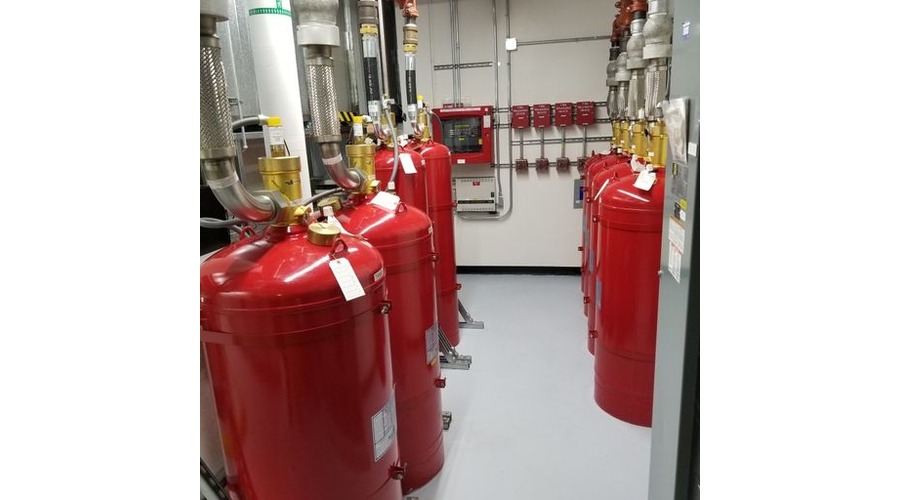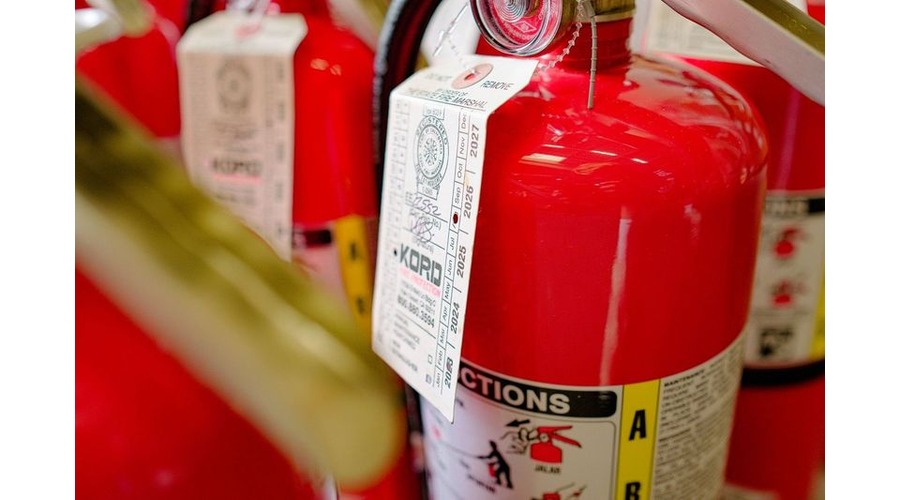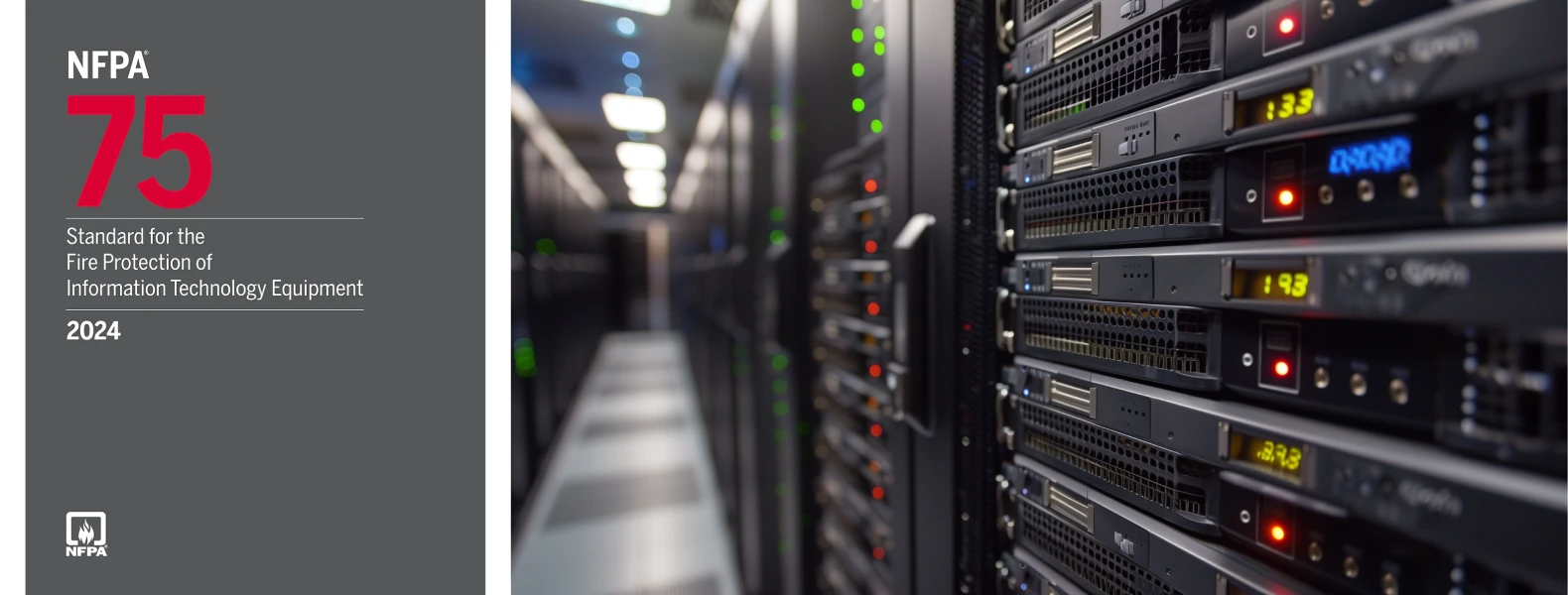

NFPA 75 For IT Environments & Data centers To Ensure Compliance
NFPA 75 For IT Environments & Data Centers
When it comes to wanting to comply with NFPA standards for your IT infrastructure, there is one code standard you wanna keep in mind. NFPA 75 For IT Environments is essential for keeping assets and people safe in an IT environment in the event of a fire. Also referred to as the Standard for the Fire Protection of Information Technology Equipment, this contains a myriad of helpful guidelines from the National Fire Protection Association concerning the safety of information technology equipment in the event of a fire.
What Is NFPA 75?
This code is a widely recognized standard for protecting information technology (IT) equipment. The National Fire Protection Association’s (NFPA’s) standard states the minimum requirements for keeping IT equipment and areas housing equipment safe from both fire damage and its associated effects, like smoke, heat, corrosion, and water.
The goal of the NFPA is to keep IT systems and areas safe from potential fire damage by establishing minimum requirements and regulations. Adhering to the regulations set in NFPA 75 is vital for property owners looking to protect their high-value IT assets.
What Does NFPA 75 Cover?
NFPA 75 covers topics and procedures concerning IT fire protection, from building construction to fire protection and detection equipment, record keeping, utilities, and emergency procedures. Additionally, this standard defines a wide variety of terms relating to IT fire protection. This even includes some basic standards, like implementing a plan of escape in the event of a fire.
NFPA IT Guidelines
NFPA 75 provides clear guidelines on what qualifies as an IT room or area. Specifically focusing on spaces that accommodate substantial IT infrastructure like large server racks or data farms, capable of handling up to 30 kW per rack. These guidelines are not intended for standard office areas or small rooms but rather for environments where complex IT equipment requires specialized construction and protective measures due to higher operational risks. This includes considerations for electrical power distribution, fire suppression systems, and environmental controls tailored to the unique demands of IT operations, as outlined in the NFPA IT guidelines.
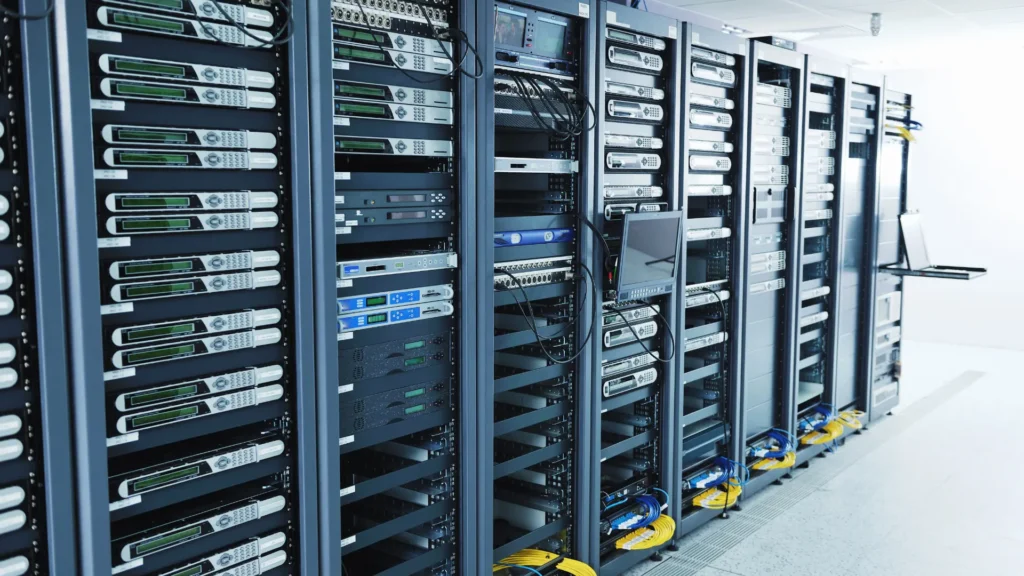

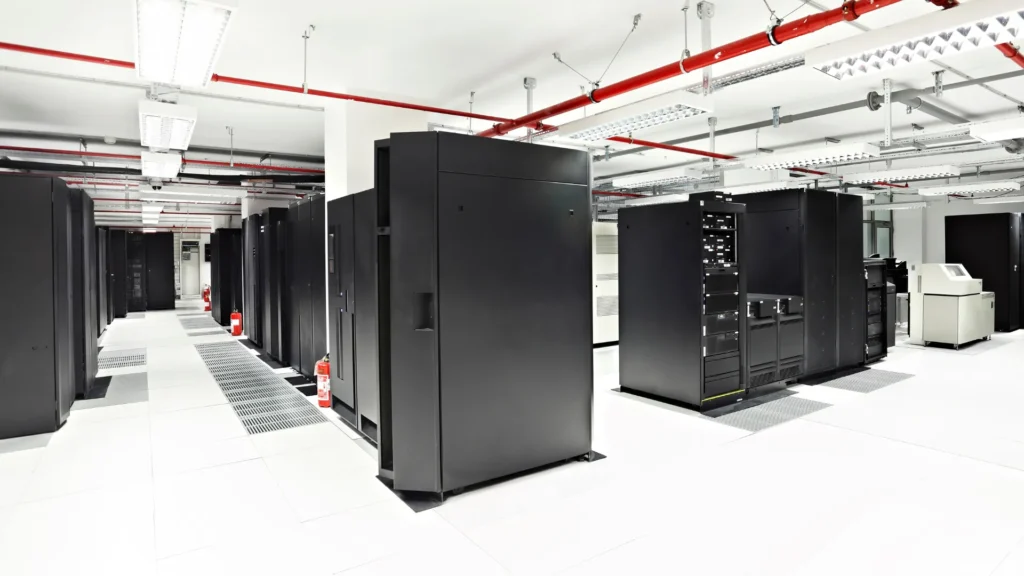

Although NFPA 75 does not cover the installation of all IT equipment, it serves as an essential management guide for facilities managing electrically powered mechanical IT equipment, small tabletop or desk-type units, and similar setups. The standard ensures that such equipment is housed in environments designed to mitigate risks associated with its operation, such as overheating, electrical hazards, and fire safety concerns that may be more prevalent in intensive computing environments. Therefore, while its scope may not encompass every IT setup, NFPA 75 remains pivotal in guiding the creation and maintenance of secure and efficient IT facilities where specialized construction and protective measures are necessary, adhering closely to NFPA IT guidelines.
Common Misconceptions About NFPA 75 and Debunking Them
- Misconception: NFPA 75 is only relevant for large data centers and not necessary for smaller IT facilities.
Debunked: It applies to all types of IT environments, regardless of size. While larger data centers may have more complex requirements, smaller IT facilities also benefit from adhering to NFPA 75 standards to protect their equipment and ensure fire safety. - Misconception: Compliance with NFPA 75 is optional and not legally required.
Debunked: NFPA standards are recognized by regulatory bodies and are often adopted into local fire codes. Compliance is mandatory in many jurisdictions to ensure the safety of IT equipment, personnel, and continuity of operations. - Misconception: Compliance with NFPA 75 is optional and not legally required.
Debunked: NFPA 75 standards are recognized by regulatory bodies and are often adopted into local fire codes. Compliance is mandatory in many jurisdictions to ensure the safety of IT equipment, personnel, and continuity of operations. - Misconception: NFPA 75 focuses solely on fire suppression systems and neglects other fire safety measures.
Debunked: NFPA 75 covers comprehensive fire protection strategies, including fire detection, suppression, prevention, and evacuation procedures tailored for IT environments. It emphasizes a holistic approach to fire safety beyond just suppression systems. - Misconception: Implementing NFPA 75 is costly and requires extensive infrastructure upgrades.
Debunked: While initial implementation may involve investments in fire detection and suppression systems, the long-term benefits outweigh costs. NFPA 75 compliance helps prevent costly damage from fire incidents, reduces insurance premiums, and enhances operational continuity. - Misconception: NFPA 75 standards are static and do not evolve with technological advancements.
Debunked: NFPA continuously updates its standards, including NFPA 75, to incorporate advancements in technology and best practices for fire safety. It adapts to changes in IT equipment and industry requirements to ensure relevant and effective fire protection measures.
Understanding these debunked misconceptions helps IT professionals and facility managers recognize the importance and applicability of NFPA 75 standards in safeguarding IT environments against fire hazards effectively.
Data Center Fire Protection Standards
Data center managers and employees shouldn’t overlook the importance of adhering to recommended fire protection standards, particularly in environments susceptible to fires involving digital equipment, wires, cables, HVAC systems, raised floors, and suspended ceilings.
Therefore, information technology professionals should prioritize compliance with NFPA (National Fire Protection Association) standards, specifically NFPA for IT or NFPA 75. These guidelines outline crucial fire protection measures and equipment necessary to safeguard IT environments effectively. Ensuring compliance with this standard is not only enhances safety but also supports uninterrupted operations in data centers, mitigating potential fire-related risks.


NFPA 75 sets crucial guidelines for safeguarding information technology equipment from fire hazards. Although these standards are currently recommendations rather than legal requirements, adhering to NFPA 75 is highly advisable for data centers aiming to protect their equipment effectively.
Mandates comprehensive fire protection measures, such as ensuring fire sprinklers cover all contained aisle areas to mitigate fire risks. It also emphasizes creating clear evacuation plans and installing functional smoke detection systems. Additionally, the standard recommends using flame-resistant equipment to further enhance safety.
One thing to also note, NFPA 76 is another standard you wanna keep in mind. This standard establishes fire protection system standards for telecommunication companies offering particular services. These services include but not limited too, telephone, data transmission, internet, wireless, and video services to the public.
Exploring Related NFPA Standards for Building Life Protection Systems
NFPA 75 does not exist in a vacuum. For comprehensive coverage, adherence to a number of NFPA standards is likely required. Just a few NFPA standards related to NFPA 75 include:
NFPA 76: Telecommunications Facilities
The two are similar, but NFPA 76 covers standards for companies that provide data, internet, telephone, transmission, wireless, and video services to the public, while NFPA is contained to IT environments.
NFPA 70: Electrical Fire Safety
standard for safe electrical design, installation, and inspection. This includes electrical installations in IT environments. Proper electrical design and installation are essential for preventing electrical fires.
NFPA 72: Fire Alarms
The NFPA 72 outlines requirements for fire alarm systems, including those used in IT facilities. It covers the design, installation, testing, and maintenance of these systems, ensuring they continue to operate as intended.
NFPA 13: Sprinkler Systems
With NFPA 75, it discusses the use of pre-action sprinkler systems for use in data centers. NFPA 13 covers the installation of a wide range of sprinkler systems, including pre-action systems.
NFPA 2001: Clean Agent Fire Systems
Clean agent fire suppression systems are covered in NFPA 2001. These systems discharge gas to extinguish fire in situations where water would otherwise cause harm. For example, rooms with sensitive electrical equipment like data centers and server rooms will likely opt for clean agent suppression systems.
NFPA 101: The Life Safety Code
NFPA 101 is the life safety code. This standard focuses on the safety of occupants in the event of a fire. It provides guidelines for design, construction, and evacuation.
As you can see, implementing NFPA 75 requires a comprehensive approach that often requires other standards for aspects such as life safety and installation.
NFPA 75 Overview
Before we part, lets quickly overview NFPA 75 so you can make the best decision for your IT department. So you keep your servers and data safe from fire.
Ensuring comprehensive fire protection in data centers involves three essential levels of safeguarding. Firstly, building-level fire protection safeguards both personnel and the structure itself. This includes the installation of fire sprinklers and handheld extinguishers, crucial for immediate response to fires.
Secondly, room-level fire protection focuses on the specific areas within the data center. Measures such as pre-action systems and wet pipe sprinklers are employed here. Additionally, inert and clean agent gas systems are utilized to extinguish fires without risking damage to sensitive data center equipment, unlike traditional water sprinkler systems.
Lastly, rack-level fire protection targets individual equipment to minimize damage. Automatic fire suppression systems are commonly used at this level. Rapidly detecting and suppressing fires before traditional water sprinkler systems are activated, thereby safeguarding critical IT equipment effectively. These three levels collectively ensure robust fire safety measures are in place to protect data centers from potential fire hazards.
NFPA 75 Overview FAQS
Get Top-Rated Fire Safety Solutions!
Fire suppression systems are indispensable in safeguarding both property and lives. Quickly reacting to fires and efficiently extinguishing them before they escalate and cause substantial damage or injury. Adhering to NFPA IT Guidelines ensures that systems are optimized for effectiveness. Don’t risk your servers or data centers to something preventable. Should you require upgrades or maintenance for your current system, please do not hesitate to contact us!

